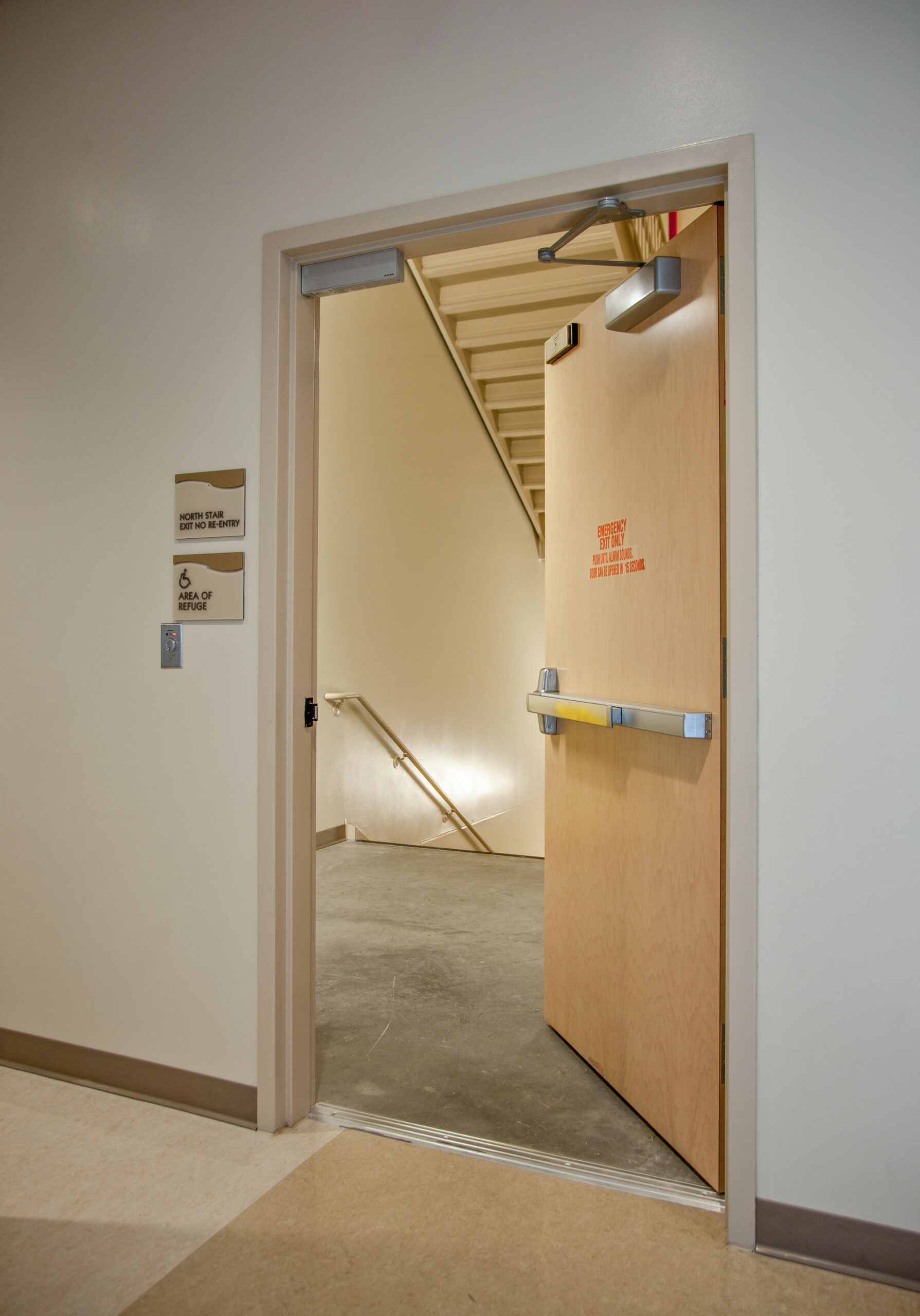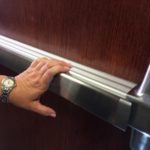In Mark Kuhn’s latest post, he makes a compelling argument for specifying panic hardware in some locations where it is not technically required by code. Do you agree with Mark’s reasoning?
~~~
 “Yes, I overspecify panic hardware, but let me tell you why…”
“Yes, I overspecify panic hardware, but let me tell you why…”
This is a phrase that I find myself saying a few times over the course of the year, while meeting with owners and architects.
Back in the 1930’s when Carl Prinzler developed the first exit device, he had a specific purpose in mind – safety! Since that time, even though safety has been the main reason for installing the exit device, we have discovered other practical uses for it.
I think before we can discuss the places that I specify panic hardware where it is not a code requirement, we must first talk about the places where these devices are required by code. This varies slightly between the I-Codes and the NFPA codes, but to paint with broad strokes, there are basically 3 occupancy types where panic hardware is required by code: Assembly, Education and High Hazard occupancies (for a more detailed explanation, Lori covers it here).
Circling back to my opening comment, I would say the most common place I have been accused of overspecifying exit devices, or in this case, fire exit hardware, would be stairwell doors. Strictly speaking, exit devices are not “required” on all stairwell doors. Even though this is the case, I would have a hard time telling you the last time that I didn’t specify them on doors entering or exiting a stairwell. But without fail I will find myself in a meeting with an architect or owner and they will ask “why?”
My reply (because I have never been accused of being a man of few words…LOL) is to try to paint a picture of a situation where they (or their family) are attempting to exit during a fire, it’s 3 a.m., the alarms are sounding, they’re groping their way down a smoke-filled corridor, only to be blocked by dozens of other people because no one can find the lock handle. I mention themselves and their families because this objection to panic hardware will arise most frequently on multifamily projects. Once I paint this picture, most (but not all) people will find themselves on my side of the exit device debate.
The use of fire exit hardware on stairwell doors would be one example where I would say that it still falls under the original purpose for this hardware – life safety, but there are other practical uses as well. Some of those additional applications have become more commonplace since the introduction of electrified features to the exit device. For example, it is now very common for the entry doors of businesses to have panic hardware tied to the access control system, because they are probably the best solution for an egress door that is time/date controlled. This way the owner can keep a door unlocked during business hours and locked when the building is not open to the public. This utilizes the electric latch retraction feature of the exit device which is also a key component for an opening that has an automatic operator; we must first retract the latch(es) before the auto operator can open the door.
I’ve listed only few places where I will specify panic hardware when it’s not a code requirement. I would be interested to hear from you all…what are some locations where you specify or supply this product where it’s not a code requirement?
You need to login or register to bookmark/favorite this content.










Agree with you push it!!
My old boss told a story of a security guard, being stuck on an upper floor, of a high rise… Because the exit door had a thumb turn door knob, and he either did not see it or could not figure how to work it!!
Anyway, my last ahj we required by ordinance, if the occupant load was over 50,,, no matter what, panic hardware was required, except main entrance.
Solved all kinds of problem, till you hit the high security places, or they thought they were high security.
I find it interesting that high security places would think that an exit device would make their space less secure!
The doors from a fire station into the apparatus bay. When they are in a hurry to get to the fire trucks, they need to push and go – quickly!
Yep…I’ve spec’d them there as well.
I agree with the exit stairwell, regardless of occupant load on the floor.